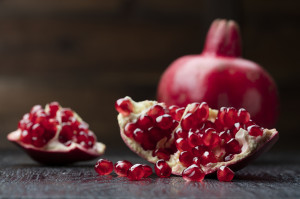

Our busy schedules give new meaning to the phrase “eat and run”. Are you too busy to stop and enjoy the food? And how is it affecting your weight? What happens when we slow down and savor.
Kind of unexpected, isn’t it?
Not really. Food is one of the great pleasures of life. We should enjoy the time we spend preparing it, perhaps with a glass of wine and conversation with a friend or significant other. The companionship of the meal: good food, good conversation with the people who are dear to us. Yes, even the pleasure of the tableware: colors, textures, the scent of the food and perhaps the candles you have lit. And last but not least, the ways food makes our bodies feel: strong, supple, energetic, satiated, replete.

Yet pleasure is something we increasingly do not derive from food as food. Think about a simple dinner: a leafy salad of bitter greens like arugula dressed with salt, lemon juice and olive oil; perhaps some bread with real butter; a lentil stew full of sautéed carrots and onions and perhaps some mushrooms or smoked bacon, fragrant with thyme; a glass of wine, and for dessert perhaps pears sautéed in a bit of butter, then stewed with ginger and topped with real, homemade whipped cream.
That is not a difficult or expensive dinner to make: the main dish can easily produce leftovers for a second dinner. It does not require a lot of equipment or specialized cooking skills. Partners and children can and should help. It doesn’t require hours and hours—whipped cream is scandalously fast and easy to make and miles better than “whipped topping.” And even though some of these things might sound scary when it comes to weight loss: (Real butter! Whipped cream!) these minor indulgences, when eaten with good, wholesome, homemade food, are unlikely to sabotage your efforts.
Yet how few of us eat this way, talking over the remains of the day with the people we love—or, if dining alone, share our table in the conversation with the author that is the experience of a good book!
How Did This Happen?
There are three fundamental reasons for the lost pleasure of food.
- Time and money. Although many families are dual-income, both partners must often work full-time to keep the family afloat. Many people are under intense financial and time pressure, especially if they have children. It can be hard find the time—and the mental and physical energy—to cook when you know you have to help children with their homework. Many parents would like a little time for themselves—and some time to sleep, too.
- “Big Food” corporations. It’s hard to meet Wall Street’s demands for profit by producing real, minimally processed food. The ingredients are too expensive and too fragile. So Big Food uses the cheapest possible ingredients: refined flours and scraps of factory-farmed meat, artificial flavors and colors, to make their products look and smell kinda like real food. They also use industrial fats, such as “vegetable oil,” salt and sugar to make these products not just tasty, but so tasty you can’t stop eating them. (Ativan) Because the more you eat, the more you buy. The result is that many of us have lost any sense of what real food tastes like in all its bitter, creamy, earthy, sour, sweet, salty, savory, tangy glory.
- Social atomization. For too many of us, work is monotonous and stressful. Many of us seek escape into the digital world where no demands are placed on us further than the clicking of a mouse. But in escaping to the online social world, we miss out on our social lives in the real world. As it turns out, chatting online and sharing posts are not good substitutes for a real conversation over a cup of coffee, leaving us feeling that we are missing something. And many times, we seek to fill that void with hyper-processed, hyper-palatable foods. They become our substitute for love or sex, exercise or adventure or anything else missing from our lives that it can seem utterly impossible to get. Sometimes, that cheesy pizza or container of ice cream can seem like the best things we have to look forward to.
Yet if we genuinely want to shed our unwanted fat, we have to reclaim the human pleasure of real food.
- Real food is not designed to bypass our normal senses so that we eat the whole thing before we realize it. Processed food is. When you eat real food that’s not been refined, your brain and your body have time to recognize that you’re eating and how filling it is. Then they say, Thank you! That was delicious! Some of those lovely pears and I’ll be happy.
- While it’s true that real food does take time to prepare, Big Food wants you to think that you shouldn’t be spending your time “slaving away in the kitchen.” Just reach for one of their products instead–because the more calories they drive into your body, the more money they make. The physical and psychological consequences? Are your problem.
- The truth is, while real food does take a bit more time and effort, if you are organized, using the Trim Down Club Meal Planner and implementing a freezer cooking system means that you only need a few extra minutes a day to enjoy real food.
- The pleasures of food cannot substitute for other pleasures. If you expect food to replace the pleasure of a good book, satisfying hobbies or work, loving friends and family—you will be disappointed and unhappy with your body.
- The downstream pleasure of real food is health. Food should make your body feel good, strong, and healthy. It shouldn’t cause chronic disease or make you overweight. And processed food does. All the time.
We need to eat for the pleasure of food—rather than as an inadequate substitute for all the other real pleasures life can and should offer us. When we do that, we give ourselves permission to acknowledge our other hungers, our other needs—and to fulfill them. We give our bodies permission to be as nature intended them to be: trim, healthy, strong, attractive.
If you would like to learn how to eat for pleasure and weight loss, click here.
Now, enjoy some delicious recipes that are a pleasure to savor and share:
Poached Pears with Ginger
Ingredients
- 2 firm-ripe pears with stems intact
- 3-4 cups / 720-960 ml water
- ½ cup / 60 g sugar (preferable: raw, demerara, dark brown, or coconut)
- ¼ cup / 60 ml Tawny Port
or ¼ cup / 60 ml all-natural red grape juice + 1 tsp. brandy extract - 1½-inch/3¾-cm piece fresh gingerroot
- 1-2 star anise, cinnamon stick, vanilla bean, or a few cloves + pinch of cracked black pepper corns (optional)
- 2 Tbsp. / 30 ml fresh-squeezed lemon, lime, and/or orange juice
Instructions
Peel the ginger and slice thinly, then cut slices into strips. In a saucepan, simmer the ginger in a little water for 10 minutes; drain and set aside.
Add the water, sugar, port, lemon juice and gingerroot to a saucepan just large enough to hold the pears lying on their sides. You may also add the optional spices. Bring to boil and stir to dissolve sugar.
Leaving the stems intact, peel the pears. If they do not stand upright on their own, cut a thin slice from the bottom of each pear. (You want them to stand upright when served.) Lay each pear on its side in the liquid, and add up to another cup of water to cover, no more. Simmer, turning pears occasionally so they cook evenly, about 20-40 minutes. (Riper pears will cook faster.)
When tender, place pears in a bowl. Reduce the poaching liquid by boiling until it is about ¾ cup or 180 ml. Pour this syrup over the pears. You may make the pears up to 1 day ahead and serve cooled.
The pears may be served warm or cool. Some fine accompaniments are high-quality vanilla ice cream, crème fraîche or whipped cream.
Whipped Cream
Ingredients
- 1 cup / 240 ml heavy whipping cream (preferable: organic/pastured)
or 1 cup / 240 ml coconut cream
or ¾ cup / 90 g macadamia nuts, soaked in ½ cup water for 1 hour, then puréed with the liquid until smooth - ¼ cup / 30 g sugar (preferable: raw sugar or ⅓ cup xylitol or inulin-based sweetener)
- A dash of vanilla extract
Instructions
Mix all ingredients, taking care to dissolve the sugar or xylitol, in a chilled bowl with chilled beaters.
Dairy: Whip until peaks form; some people like this firmer, some softer.
Non-Dairy: Whip until attaining desired consistency.
Crème Fraîche
Ingredients
- 1 cup / 240 g heavy whipping cream, room temperature (preferable: organic/pastured)
or ¾ cup / 90 g cashew nuts, soaked in 1 cup / 240 ml water for 2+ hours
and puréed in 3 Tbsp. water + 1 Tbsp. lemon juice or vinegar, until smooth - ½ cup / 120 g sour cream, room temperature (preferable: organic/pastured)
or ½ cup / 120 g organic vegan cultured yogurt
Instructions
Mix the ingredients in a clean bowl. Cover with a clean towel and let stand at about room temperature (if you are making this during fall or winter, you may have to put it near the furnace) until it thickens, about 8 to 24 hours. Place in covered container, refrigerate, and use for up to 2 weeks.
Yes, you are deliberately fermenting cream: the good bacteria in the sour cream or yogurt are now colonizing the whipping cream so bad bacteria cannot form.
As with all homemade fermented foods, if you have an impaired immune system, you may wish to discuss eating this with your doctor.
Comments 2
Leave a Reply
You must be logged in to post a comment.




Not only are we programmed, we believe it. It’s a shame big business doesnt really care about our health, just our money. Happy I joined this site so I can be woke up to the truth. I never knew how to eat right. Ate the wrong things as long as I can remember now, I have diabetes and had to have my gall bladder removed from yo-yo dieting.
It’s amazing how much we are ‘programmed’ by others – such as advertisements and that we forget everything we knew for years. I am enjoying my food much more and actually have to go on a walkabout to different places to find the variety of foods required. If you can’t find everything there is always a substitute. I shop daily now and end up not buying half the stuff because it’s there on a shelf in the supermarket.